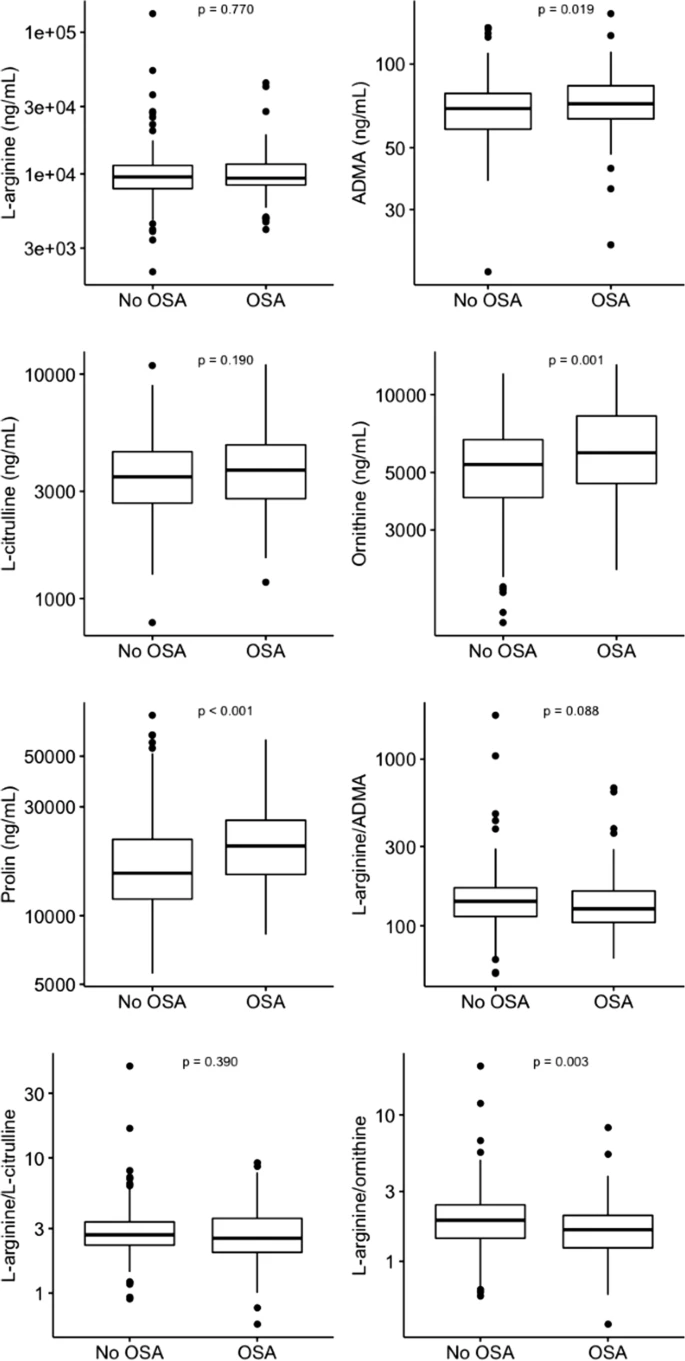- Meghan D. Althoff, Guillermo Jimenez, Ryan Peterson, Ying Jin, Hartmut Grasemann, Sunita Sharma, Alex D. Federman, Juan P. Wisnivesky & Fernando Holguin
Respiratory Research volume 23, Article number: 230 (2022)
Abstract
Background
Imbalance in L-arginine and nitric oxide (NO) metabolism has been implicated in the pathophysiology of asthma and obstructive sleep apnea (OSA), and both diseases impact the other’s morbidity. We sought to determine whether L-arginine/NO metabolism differs between adults with asthma with or without comorbid OSA, and its association with asthma morbidity.
Methods
This is a cross-sectional study of 322 adults with asthma recruited in Denver, CO and New York City, NY. Data were collected on OSA status, spirometry, and metrics of asthma control and morbidity. L-Arginine metabolites were quantified in patient serum. Bivariate analyses and multiple regression were performed to determine differences between L-arginine metabolism, OSA and association with asthma morbidity.
Results

Among the 322 participants, 92 (28.5%) had OSA. The cohort was 81.6% female, 23.4% identified as Black and 30.6% as Latino. Patients with asthma and OSA had significantly higher serum concentrations of NO synthase inhibitor asymmetric dimethylarginine (ADMA) (p-value = 0.019), lower L-arginine to ornithine ratios (p-value = 0.003), and increased ornithine (p-value = 0.001) and proline levels (p-value < 0.001) compared to those without OSA. In adjusted models, OSA was associated with worse asthma control, adjusted mean difference in asthma control questionnaire of 0.36 (95% confidence interval [CI]: 0.06 to 0.65), and asthma quality of life questionnaire, adjusted mean difference: − 0.53 (95% CI: − 0.85 to − 0.21), after adjusting for relevant covariates including body mass index and L-arginine metabolites.
Conclusions
Adults with asthma and OSA had increased ADMA, an inhibitor of nitric oxide synthase, and greater metabolism of L-arginine via the arginase pathway compared to those with asthma alone, indicating a possible shared pathophysiological mechanism of these diseases.
